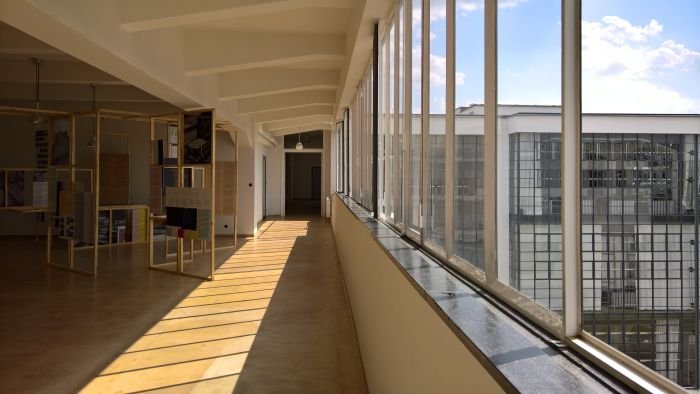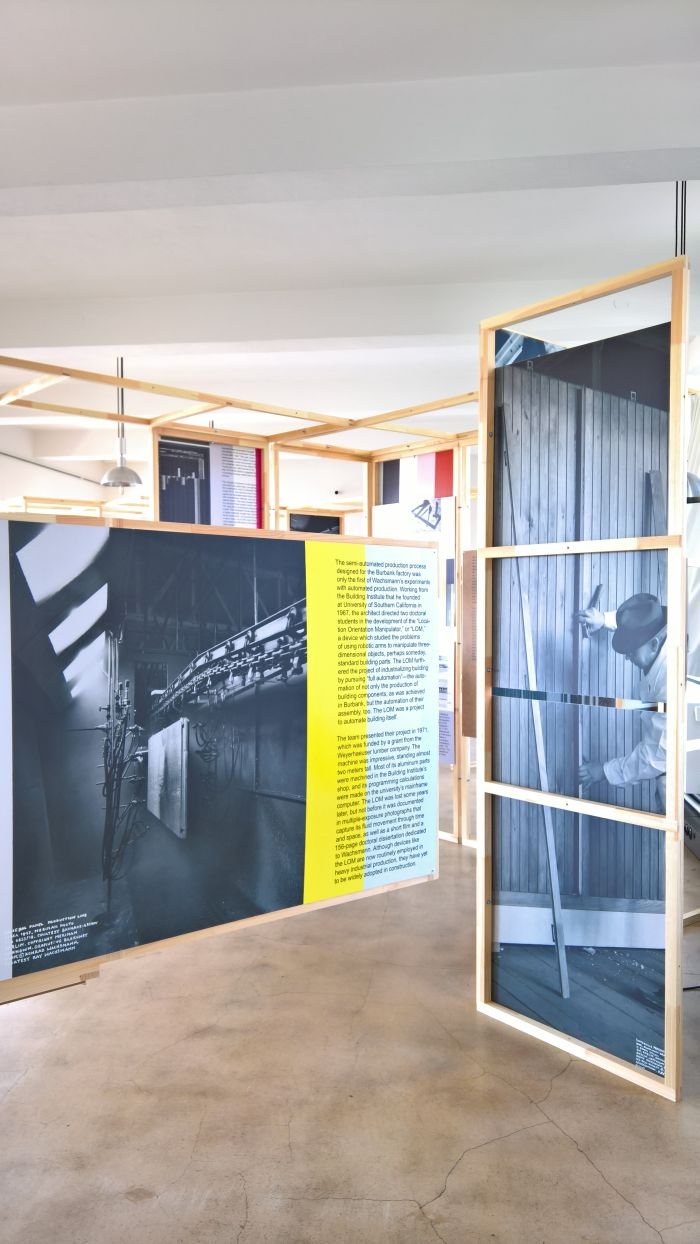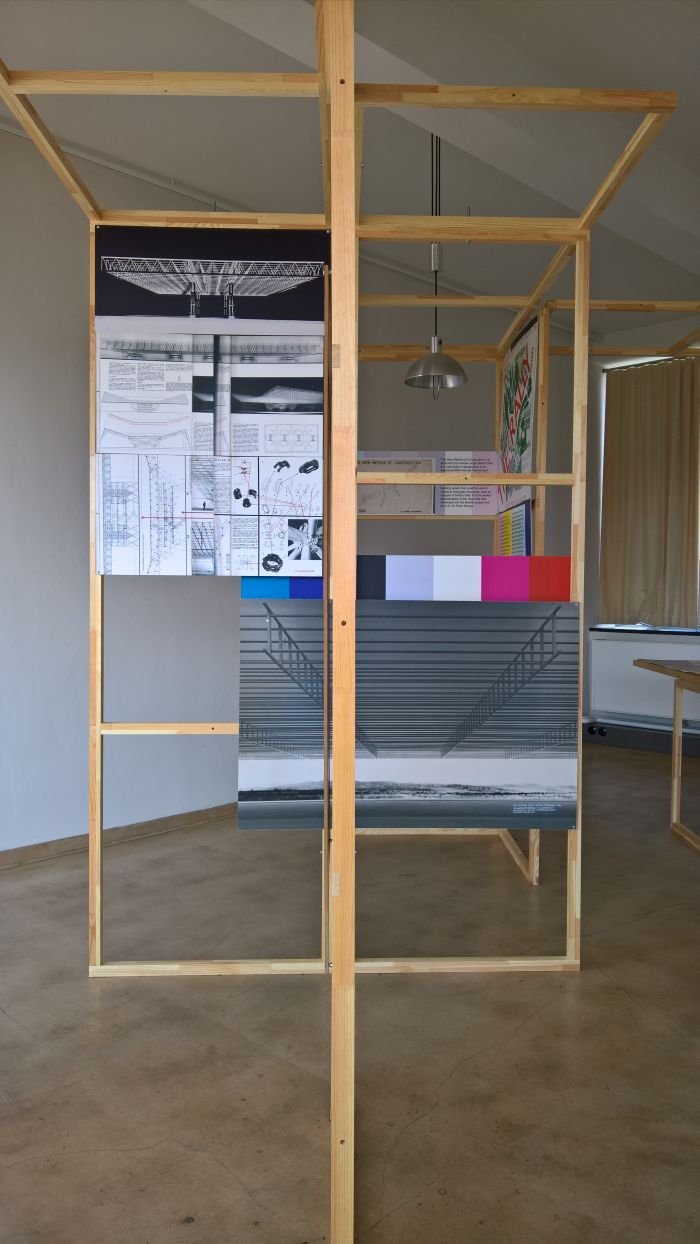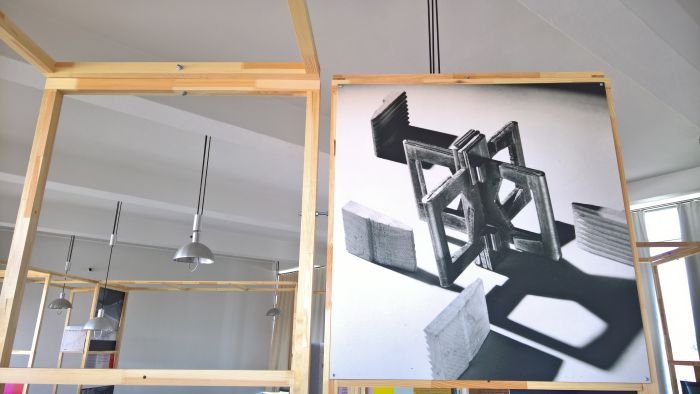Systems bring order to chaos, allow relationships to be understood/defined, enable standardisation. And depend on a carefully considered, well designed and constructed connector.
In 1939 the German architect Konrad Wachsmann developed a metal connector which subsequently became the central component of the General Panel prefabricated construction system developed by Wachsmann in cooperation with Walter Gropius.
In 2018 the Bauhaus Lab reflected on that connector, Konrad Wachsmann and standardised, prefabricated construction systems. The results of those reflections were discussed in a one day symposium, and can be viewed in the exhibition The Art of Joining: Designing the Universal Connector at Stiftung Bauhaus Dessau.
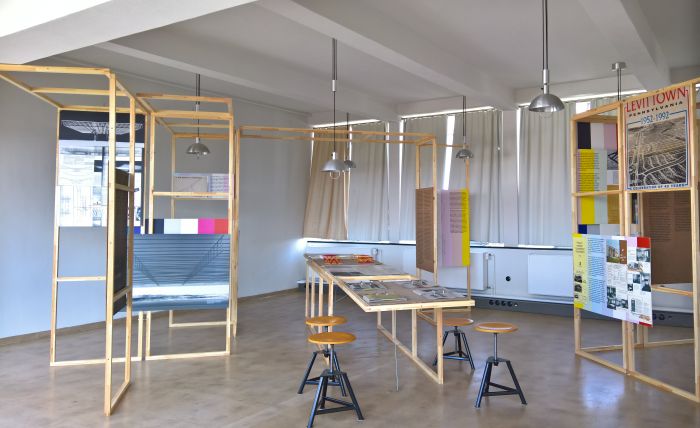
Inaugurated in 2013 the Bauhaus Lab understands itself as "a platform of collaborative learning, research and design" via which young designers/architects/artists/curators undertake a three month long research project, or perhaps better put, each of the selected designers/architects/artists/curators undertake their own three month long research project in context of a collective investigation of a set theme, pooling thereby their individual experience and perspectives to help achieve a more eclectic and differentiated view of the topic. For its sixth edition, and in context of the Bauhaus Dessau's 2018 theme of the Standard, the Bauhaus Lab took as its staring point Konrad Wachsmann's universal connector and used that, if you will, as a metaphoric node via which to connect the research of the eight 2018 Bauhaus Lab participants into Wachsmann's work, the General Panel Corporation and prefabricated, standardised, construction systems in wider contexts.
By necessity regular reference is made in what follows to Konrad Wachsmann. That we suspect, fear, not all will be familiar with Wachsmann....... We skipped sprightly through the, at times highly colourful, Wachsmann biography in our 2016 Design Calender post, however, and in context of the subject at hand: born in Frankfurt (Oder) in 1901, in 1926 Konrad Wachsmann took up a position with Niesky, Germany, based Christoph & Unmack, at that time one of the world's largest suppliers of prefabricated houses, before in 1941 the rise of the Nazis saw Wachsmann's enforced emigration to America where he joined the office of Walter Gropius, and with whom in 1942 he established the General Panel Corporation, a company involved with the supply and assembly of a from Wachsmann and Gropius developed prefabricated building system. A system which had at its core a relatively simple looking connecting element which allowed for the elimination of "practically all of the necessity for using nails, screws, hooks, and similar fastenings."1 And an ultimately unsuccessful project. In many regards much more an architectural theoretician than an actual constructor, in the course of the decades between 1950 and 1980 Konrad Wachsmann held teaching and research positions at numerous institutes including IIT Chicago, USC Los Angeles and HfG Ulm, and published numerous texts on architecture and construction.
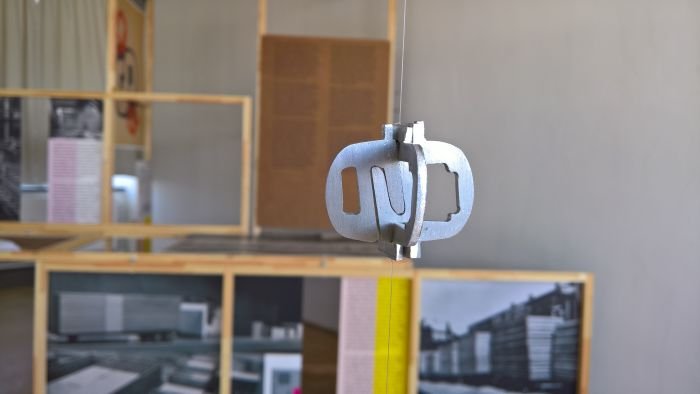
Divided into three sections exploring respectively The Architecture of Systems, The contested legacy of prefabrication & The topicality of the "Turning Point of Building", the latter being a reference to Wachsmann's 1961 book Turning Point of Building, or if you prefer 1959 book in context of the original German Wendepunkt im Bauen, the 2018 Bauhaus Lab Symposium featured broad, introductory considerations on the three themes by four invited experts - Christian Sumi, Douglas Murphy, Suzanne Strum & Georg Vrachliotis - before the Lab participants presented results and discussions from their own research, with its focus very much on Wachsmann.
And research which the exhibition neatly abridges into a narrative lead by Konrad Wachsmann's work, but which makes regular diversions into wider discourses related to and inspired by that work.
Opening, somewhat logically, with a version of the Wachsmann connector, The Art of Joining: Designing the Universal Connector then very quickly scuttles backwards to consider the origins of prefabricated construction generally and specifically Wachsmann's former employer, Christoph & Unmack, considerations which include Lab participant Adam Przywara's considerations on the military origins of prefabrication and the (associated) role of prefabricated constructions in enabling and supporting colonialism. A position which was neatly complimented in the symposium by London based architect and author Douglas Murphy's comments on the connections between prefabrication and capitalism, that in its infancy prefabrication was essentially a by-product of the capitalist system and was motivated less by architectural concerns as with optimally utilising available factory capacity, securing jobs and promoting new materials.*
As an exhibition The Art of Joining explains such arguments in context of the General Panel Corporation, explaining that the initial positioning of the General Panel system was for supplying military buildings, including housing for military personal, before a switch of focus to private homes, a pressing theme in post-War America. And not just in post-War America, as previously noted, in 1947 Walter Gropius visited Germany with the aim of securing commissions for the General Panel system in context of the post-war rebuilding, opining as he did that "a new architectural style will have to be found, one which reflects the spirit of the times”.2
With its promise of a more efficient, cost effective and speedier construction process, and one which, and as with Michael Thonet's chair production process, did away with the need for specialist craftsfolk and could be undertaken by anyone with appropriate training, standardised prefabricated construction appeared to be that new architectural style. And job generator.
Yet despite the many, apparent, advantages of the system and Wachsmann's and Gropius's most excellent contacts, the General Panel Corporation failed.
Why?, we hear you ask.
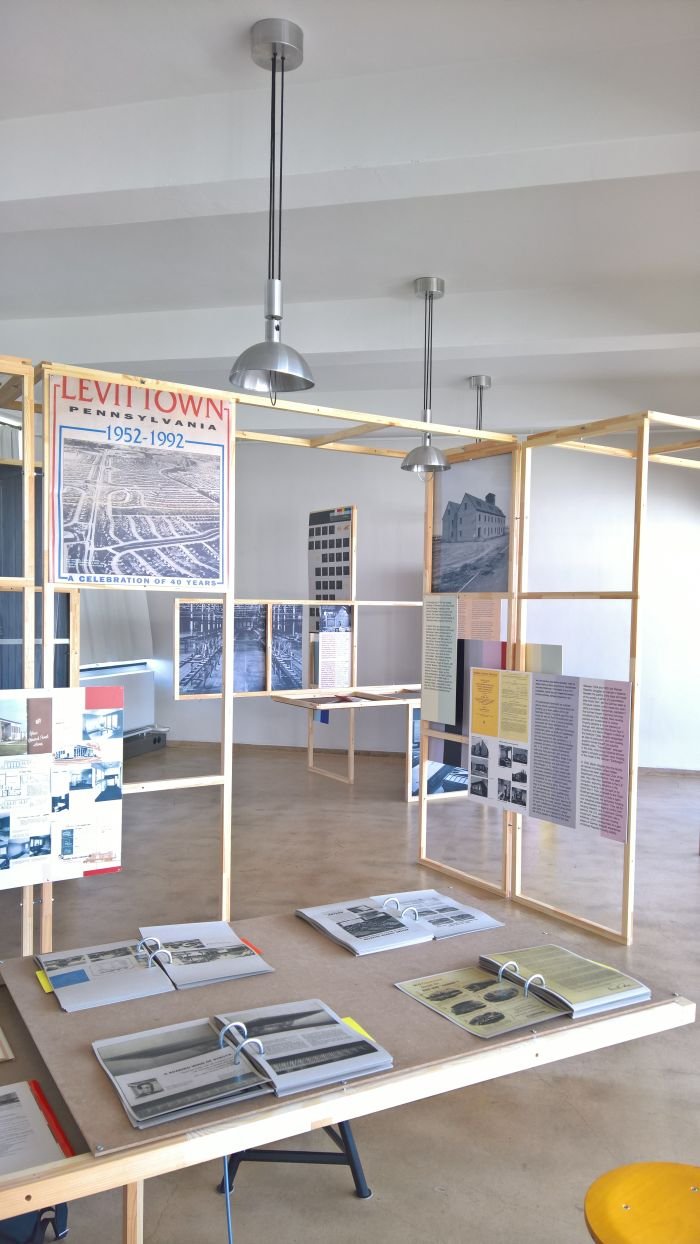
The validity of the question is seemingly underscored, underfloored?, by the fact that, and as was often referred to in the symposium, American house construction was, traditionally, an, essentially, wooden prefabricated system. Or put another way, no one was trying anything especially new or radical. That said, according to Lab participant Rhiannon Haycock one possible reason for the failure of the General Panel Corporation could have been that their houses were too modern, too severe, too austere, too progressive. And, arguably, Wachsmann and Gropius may have furthered a certain resistance to their designs through the inclusion of furniture by the likes of Charles & Ray Eames in their publicity material, furniture which, and despite what everyone tells you, wasn't universally admired, for as we noted in our post on Edward J Wormley, in the immediate post-war years large sections of the American public "were adapting to the changing conditions slower than many of the architects and designers of the day". In contrast competitor firms such as Levitt & Sons were producing houses of a more classic, accepted, readable, US typology, just as Wormleys furniture provided the security of familiarity so too did the Levitt houses, or as an exhibition panel explains Levitt offered the American Dream, not an avant-garde vision. And did so with greater success. A situation which threw our thoughts back to the indubitable American accent of the prefabricated wooden house Wachsmann built for Albert Einstein in Caputh near Berlin. If he had retained that pre-war typology...? Did Gropius want the flatter aesthetic....? Were the pair too dogmatic......?
Thoughts which were interrupted when in the symposium an interesting discussion arose as to the differences between huts/cabins and homes, a discussion which on the one hand considered that for all the promise prefabs appear to bring with them, they often fall short in practice not least because, as a general rule, they are inflexible, rarely customisable, and visually monotonous, and also the (associated) mobility aspect that is such a key feature of most prefabricated constructions, that which allowed them to play a role in colonialism, but also means that in many regards the prefab always has an implication of temporality. Is a way to a means rather than an end. In which context, as Lab participant Elizabeth Andrzejewski pointed out, Wachsmann's connector was, in keeping with the traditions of the prefab, so conceived that it could allow for demountable structures; however, Wachsmann kept that idea, kept underscoring it, even when General Panel were selling domestic houses, structures most people don't want, or at least don't plan, to deconstruct. The competitors' systems weren't readily demountable, nor pitched as being such. And more successful.
Whereby, surely, the modularity, the ability to change a building's dimensions, form, layout and thereby function, purpose and mode of interaction such systems enable is one of the joys of such systems? Surely? It is certainly what makes Wachsmann's colleague Fritz Haller's Maxi/Midi/Mini/Möbel construction system so interesting. And is without question what led us to use the phrase "enduring logic and magnificence of modular construction" in our note on Charlotte Meijerink's Suru Housing graduation project at the KABK Den Haag. Words we stand by, even if we now understand that makes us not advocates of progressive socially and environmentally responsible construction, but apologists for a colonial militaristic capitalist hegemony.
But, and regardless of such discussion on the reasons, the General Panel Corporation failed.
Every end being a new beginning, with the demise of the General Panel Corporation started Konrad Wachsmann's teaching and research career, initially taking up an offer from Serge Chermayeff of a post at IIT Chicago before moving on to USC Los Angeles where he established the Building Research Division and from where much of that work for which Wachsmann is most popularly known developed, and for all where he further evolved his considerations on connections, systems, networks, space, construction: considerations so neatly encapsulated in an otherwise unspectacular, insignificant looking piece of metal.
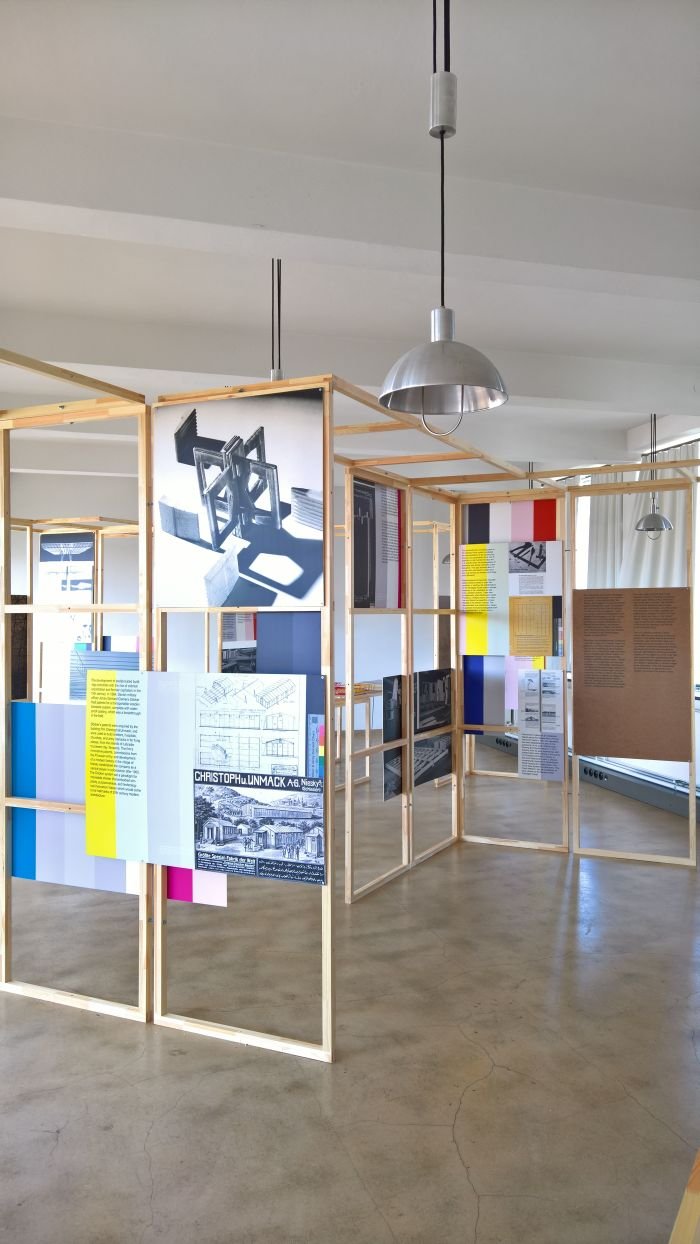
An accessible exhibition making judicious use of archive photos, documents and diagrams supported by books, magazines, models and a short film, The Art of Joining: Designing the Universal Connector is pleasingly free from the opaque patois of which architects are so partial, thereby allowing for a presentation which succinctly and deftly explains not only how Wachsmann's system thinking and connector defined the General Panel constructions, administration and production, but also why Wachsmann, and his universal connector, remain relevant. How considering Wachsmann's connector as a metaphoric node means it can be used to not only link the Bauhaus Lab's research on the historic, but also to build bridges to the future.
The question of how, why and what we construct remains as acute, relevant and openly controversial now as it was when the likes of Gropius and Wachsmann believed their General Panel home was the answer; albeit a dialogue enriched today by the experiences of the past and enlivened by new understandings of not just form, function and aesthetics, but also materials, processes and modalities of use. In which context we can't recall, in an otherwise very wide ranging discussion, the symposium ever turning to contemporary production technologies, new materials or new understandings of concepts such as "home", "office" or "factory", all of which have evolved since the 1940s. And will continue to evolve as we head towards the 2040s.
Admittedly we may have missed reference to such, it's possible, it was a warm day in Dessau, we'd skipped lunch for a cheeky exhibition preview, while, and as a consequence of our #campustour, thick hair hangs low over our ears meaning we're effectively deaf; but while there was certainly mention of Building Information Modeling, BIM, a digital system for managing, controlling and planning construction, we can't recall other contemporary materials/processes/understandings being discussed....
What, sorry, why didn't we raise it?
We were in a room full of architects. Our brains don't work as quickly as those of architects. We aren't able to form opinions on the fly. We are creatures of reflection. Need time to ruminate. To wander the streets and valleys accompanied by our thoughts alone. And to double check things.
However, we'd argue, that if one of the reasons prefabricated housing often fails to meet its expectations is because its standardisation excludes individuality, contemporary materials and processes coupled with intelligently considered modularity allow for that individuality. In many regards one could argue that digital production and contemporary materials have made standardisation obsolete, that we're in a post-standardised society. Whereas in previous decades reduction in cost was achieved through mass production, today the individual is often as cost effective as the series. "All" one needs is a suitable system to host the process.
Whereby for us, and as so often, modularity is the key, which brings us back to where we were few paragraphs ago; the variability Wachsmann's demountable joint allows is arguably a construction principle whose value and relevance is not only better understood today, more desirable today, but which contemporary process and materials make more probable. Or put another way, maybe, one further, possible, contribution to the failure of the General Panel Corporation was that people didn't understand the full potential. But could/do now.
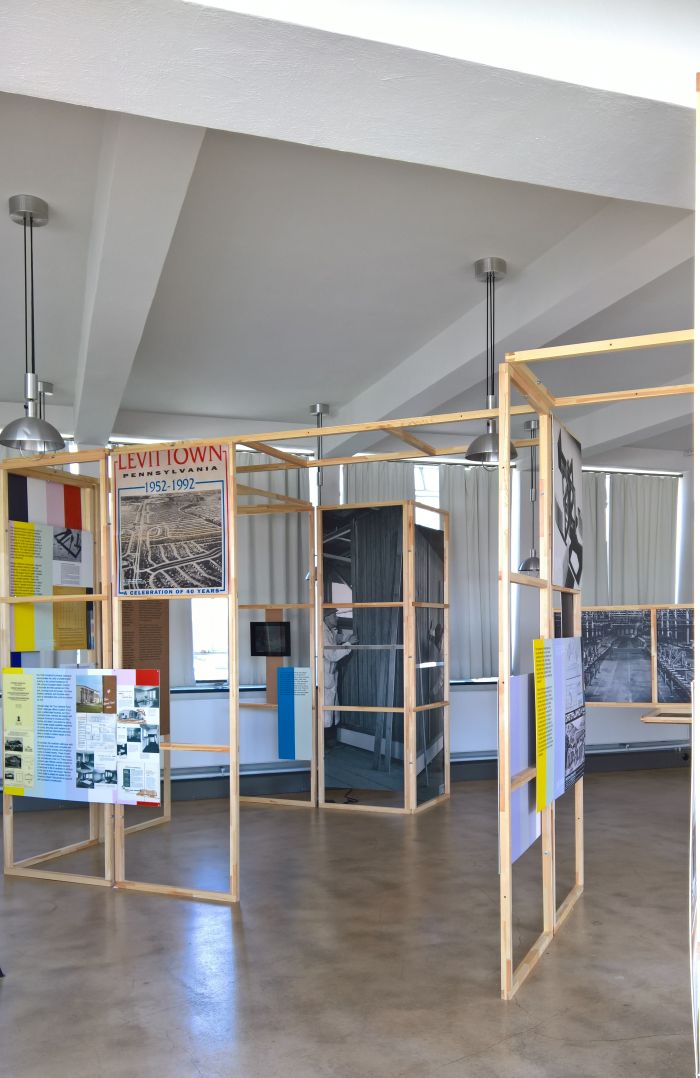
Beyond its relevance to contemporary discourses on construction, both at a building level but also for products and furniture, as a metaphoric node Wachsmann's connector also allows for more philosophical considerations.
On its own a connector is relatively abstract, only acquires a relevance as part of a system, and that not only as part of physical systems, but also of intangible natural, economic, communication, political, social, etc systems.
The Art of Joining not only explains how Konrad Wachsmann extended his standardised system thinking from the building to the built environment, the factory environment, the educational environment, etc, but also how he, and at the risk of generalising to the point of inaccuracy, sought to create organised spaces, be they built or theoretical, which themselves had no defined function, but which allowed for a high degree of standardised organisation. Similarly, as Karlsruhe Institute of Technology, KIT, Professor Georg Vrachliotis noted in context of Fritz Haller, not only did he want to create super-classifications of construction, freed from conventional understandings, but also how Haller moved in the course of his career from construction nodes over transport nodes and on to communication nodes.
Or put another way, a construction node may not be directly analogous to a social node, but can inform them. And while a connection isn't a system, without a carefully considered, well designed and constructed connector, you ain't got no system.
And without systems, you have chaos.
In construction. In society.
The Art of Joining: Designing the Universal Connector runs at Stiftung Bauhaus Dessau, Gropiusallee 38, 06846 Dessau-Roßlau until Friday November 30th
Full details can be found at www.bauhaus-dessau.de
* On an a housekeeping front, we don't have any direct quotes from the symposium, can't do shorthand, sorry, but we can't, never learned, even though we had the chance, sorry..... as such where reference is made to the symposium we are paraphrasing, not quoting. Apologies in advance for any errors
1US Patent 2,355,192 "Prefabricated Building", Konrad L. Wachsmann and Walter Gropius, August 8th 1944
2“Neue deutsche Baukunst? Gespräch mit Prof. Gropius”, Neue Zeit, Berlin, 12.08.1947
And until Wednesday October 31st visitors can also view the exhibition Carl Fieger. From Bauhaus to Bauakademie, an exhibition which considers many similar thoughts. Including an introduction to an earlier prefabricated, standardised Gropius construction system.
